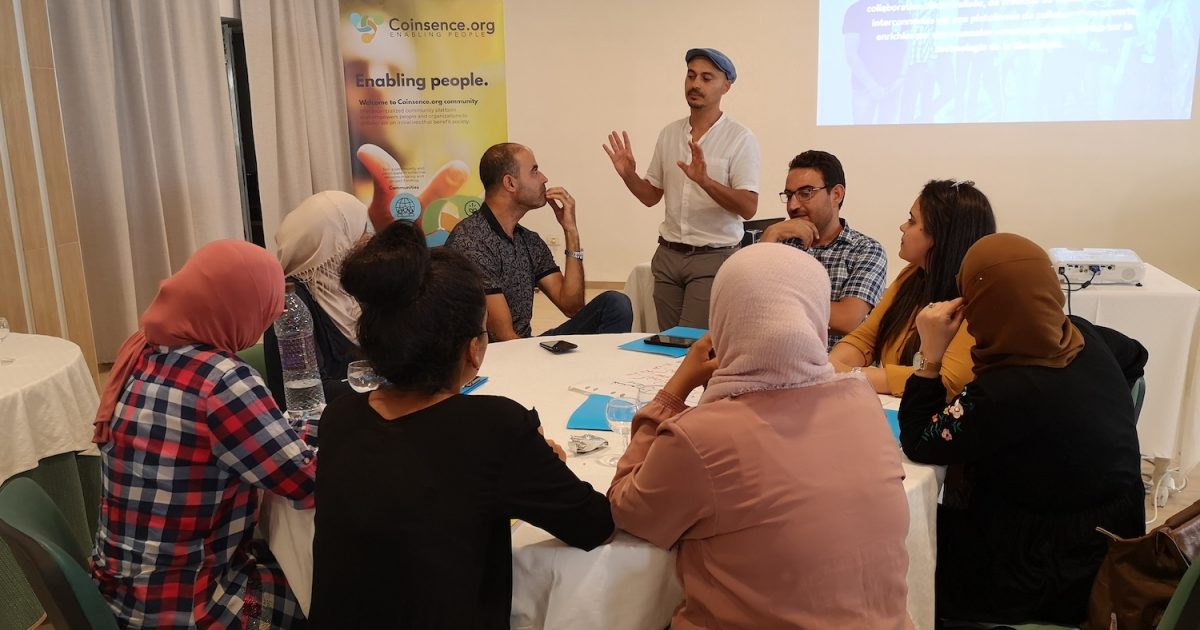Donating to the United Nations Children’s Fund (UNICEF) may turn out to be the Ethereum Foundation’s shrewdest move yet.
“We are still discussing the details on what we can do together, but we have decided to continue support for the next couple of years,” said Ethereum Foundation Director Aya Miyaguchi. “I believe a partnership with a group like UNICEF can maximize our impact without shifting our focus from what we still need to do to improve Ethereum as a technology.”
The foundation donated roughly $150,000 worth of bitcoin and ether the UNICEF’s experimental crypto fund in October 2019. Since then, the UNICEF Kazakhstan office has developed an ethereum-based system for processing internal payments, such as sending funds from the UNICEF headquarters to people running a local education program.
“We can see now clearly it’s operational and it’s great for the organization. So we will continue to work on that,” said UNICEF partnership specialist Oleksandra Gaskevych. “We only have used ethereum so far, for smart contracts. We’re thinking maybe we could test bitcoin as well for digital currency transfers, so we’ll see.”
The Kazakhstan-based team is still putting a few finishing touches on the smart contract platform, because UNICEF budgets require multiple signatures from people with varying degrees of clearance. Today, a significant amount of office paperwork still involves people double-checking expenditures by hand. So this new digital process is much more efficient.
Gaskevych said they expect to be fully transitioned over to the ethereum-based system in 2021.
“We can easily adapt it to other Russian-speaking countries in the region,” she added.
Tunisian pilots
Elsewhere, UNICEF is also partnering with SoftBank Investment Advisers (SBIA) to develop a structure for distributing cryptocurrency. Chris Fabian, co-lead of UNICEF Ventures, said so far the crypto fund is starting slow by funding several startups like Coinsence, a Tunisian token project experimenting with ERC-20 tokens for community currencies.
Coinsence founder Karim Chabrak said more than 200 people in the beach town of Hammamet, with roughly 100,000 residents, participated in a pilot program that is graduating to a fully operational phase this quarter.
“There are communities that have no money and a lot of unemployed youth,” Chabrak said. “Communities need to be able to address that without waiting for governments to act.”
Residents mainly use the token to pay youth for jobs at local restaurants and resorts, then offer them a discount at particular businesses. Chabrak said the goal is to reduce the unemployment rate and encourage productive spending habits. This year, Chabrak said he is establishing a national association with a legal framework to support any other community that wants to issue its own local token.
“We heard about bitcoin in 2010,” Chabrak said. “But we are trying to build currencies that aren’t speculative, that are part of the commons.”
All of these experiments were funded by the Ethereum Foundation, which also acts as a consulting resource but not an official partner like SBIA. For example, Coinsence received 50 ether, most of which was used for pilots and research in late 2019. Likewise, the Argentinian startup Atix Labs received a bitcoin from the Ethereum Foundation’s donation, and developed software tools that Fabian said may be useful for the program in Kazakhstan.
Fabian said last year’s donation from the Ethereum Foundation was “part of a larger agreement with them, that we had to test some of the piping with them first.”
Multi-pronged approach
The ethereum community is investing in global outreach through this agreement with UNICEF, even without directly implementing blockchain solutions.
“They’ve made the community available to us for a variety of things,” Fabian said.
This created a ripple effect beyond the donations themselves. For example, Gaskevych said basic materials related to blockchain technology and smart contracts were incorporated into the Kazakhstan office’s digital literacy program for youth, teaching 200 people about ethereum so far. As UNICEF looks to transition its internal system, and find external partners willing to accept ether, the team is focused on training local talent to develop customized solutions for specific needs.
Fabian clarified only a few of UNICEF’s external partners in Kazakhstan are willing to accept cryptocurrency for the services they already provide, like an internet service provider or a construction company.
“That’s fine, we’re not trying to push it,” he said. “It’s not that we are only paying them in crypto, we’re also paying them in fiat so there’s a little bit of hedge.”
Over the next two years, Fabian said UNICEF’s goal is to help schools without internet connections get online by supporting local tech ventures, some of which may choose to run their own cryptocurrency nodes and earn revenue from providing connectivity to people and businesses in the surrounding neighborhoods. That’s how UNICEF aims to make this project sustainable beyond one-off donations.
In addition to the global school initiative, called GIGA, Chabrak said he hopes community currencies in Tunisia will be designed to help nonprofits and universities promote the United Nations’ sustainability goals by incentivizing eco-friendly habits.
Why ETH?
To be clear, there’s one main reason ethereum became the most widely used blockchain technology across UNICEF’s global development strategy, which seeks to deploy nearly $45 billion in diverse programs around the world. The reason is the Ethereum Foundation reached out and ponied up.
Even though the donation was a tiny fraction of UNICEF’s related budget, the “agreement” Fabian referenced motivated his fund to set up a compliant system for receiving and distributing cryptocurrency. The fund also accepts bitcoin, but there have been hardly any bitcoin donations so far, Fabian said.
Based on his research in Tunisia, Chabrak said the most challenging part of getting people to use cryptocurrency was inspiring a sense of personal ownership over an asset that isn’t associated with a familiar entity, like the government. That’s why foreign startup tokens, and to some extent bitcoin, have been a harder sell.
“Communities are not so motivated to build an ecosystem around the currency because they don’t identify with the currency and have full control,” he said. “People accept the coins when they know the people that are issuing the coins and they can implement their own governance.”
(The fact such communities don’t see bitcoin as something they can control and influence the governance of may be, in part, a misunderstanding.)
With that in mind, the Ethereum Foundation’s strategy of finding an indirect way to fund blockchain education and entrepreneurship in emerging markets, where other computer science resources are scarce, may eventually set it apart among blockchain projects competing for both market- and mind-share.
“Cryptocurrency is too often seen as a means for investment, but as you know, ethereum is capable of so much more than that,” Miyaguchi said. “Whether with UNICEF or other parties, we are always looking for ways to maximize our impact using the technology that we’re helping to build.”
Disclosure Read More
The leader in blockchain news, CoinDesk is a media outlet that strives for the highest journalistic standards and abides by a strict set of editorial policies. CoinDesk is an independent operating subsidiary of Digital Currency Group, which invests in cryptocurrencies and blockchain startups.




